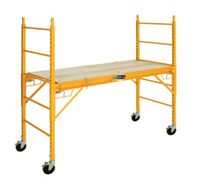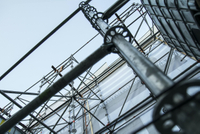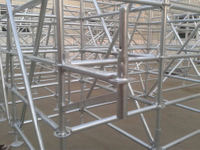Content Menu
● What Is Aluminum Tube and Clamp Scaffolding?
● Advantages of Aluminum Tube and Clamp Scaffolding for Outdoor Use
>> 1. Lightweight and Easy to Handle
>> 2. Corrosion Resistance
>> 3. Durability and Strength
>> 4. Weather Resistance
>> 5. Versatility and Customizability
● Common Outdoor Applications of Aluminum Tube and Clamp Scaffolding
● Safety Considerations for Outdoor Use
>> Proper Assembly and Inspection
>> Load Capacity and Overloading
>> Weather Precautions
>> Fall Protection
● Maintenance Tips for Aluminum Tube and Clamp Scaffolding Outdoors
● Comparison: Aluminum Tube and Clamp Scaffolding vs. Steel Scaffolding Outdoors
● Conclusion
● FAQ
>> 1. Can aluminum tube and clamp scaffolding be used outdoors in rainy or snowy weather?
>> 2. How does aluminum tube and clamp scaffolding handle strong winds outdoors?
>> 3. Is aluminum tube and clamp scaffolding as strong as steel scaffolding for outdoor use?
>> 4. What maintenance is required for aluminum scaffolding used outdoors?
>> 5. Are there any safety standards specific to aluminum tube and clamp scaffolding outdoors?
Aluminum tube and clamp scaffolding is a popular choice for many construction, maintenance, and event projects due to its versatility and lightweight nature. But a common question arises: Can aluminum tube and clamp scaffolding be used outdoors? This article provides a comprehensive exploration of the use of aluminum tube and clamp scaffolding in outdoor environments, covering its advantages, safety considerations, maintenance tips, and practical applications.
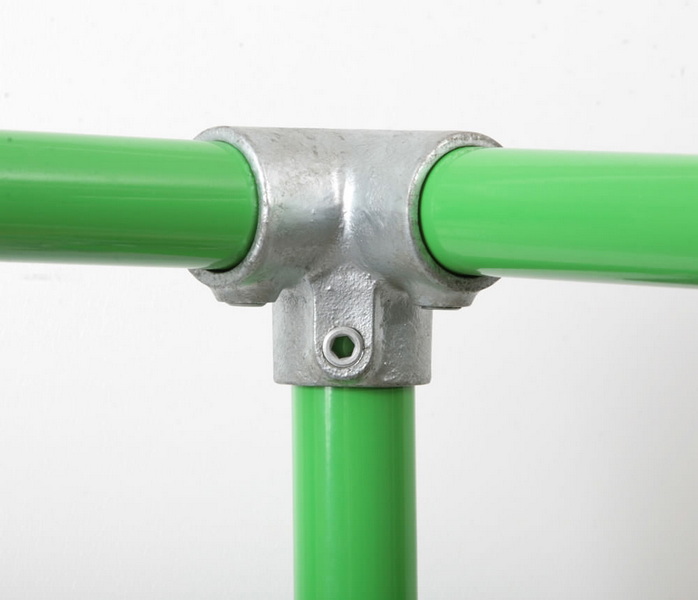
What Is Aluminum Tube and Clamp Scaffolding?
Aluminum tube and clamp scaffolding consists of hollow aluminum tubes connected by clamps (also called couplers) to create customizable scaffolding structures. The tubes typically have a diameter of about 48.3mm (1.9 inches), and the clamps allow connections at various angles, making the system highly adaptable to different shapes and sizes.
- Tubes: Made from high-strength aluminum alloy, lightweight and corrosion-resistant.
- Clamps: Usually forged steel or aluminum, securing tubes at right angles or other configurations.
- Platforms: Wooden or metal planks placed on horizontal tubes to provide working surfaces.
- Accessories: Guardrails, base plates, braces, and other components for safety and stability.
Advantages of Aluminum Tube and Clamp Scaffolding for Outdoor Use
1. Lightweight and Easy to Handle
Aluminum tubes weigh significantly less than steel, approximately 1.67 kg per meter, which makes transportation, assembly, and disassembly faster and less labor-intensive. This is especially beneficial for outdoor projects where mobility and quick setup are essential.
2. Corrosion Resistance
One of the most critical advantages of aluminum scaffolding outdoors is its natural resistance to corrosion. Unlike steel, aluminum does not rust when exposed to rain, snow, or humidity, making it ideal for long-term outdoor use without extensive maintenance.
3. Durability and Strength
Despite its light weight, aluminum scaffolding tubes have excellent tensile strength. Alloy 6082-T6, commonly used in scaffolding tubes, provides a durable structure capable of supporting heavy loads safely, even in challenging outdoor environments.
4. Weather Resistance
Aluminum scaffolding withstands harsh weather conditions such as UV exposure, rain, snow, and temperature fluctuations without degrading. This makes it suitable for construction sites, outdoor events, and maintenance work year-round.
5. Versatility and Customizability
The tube and clamp system allows for infinite configurations, accommodating uneven terrain, irregular building shapes, and complex outdoor structures. It can be adjusted on-site to meet changing project requirements.
Common Outdoor Applications of Aluminum Tube and Clamp Scaffolding
- Construction Sites: For building facades, roofing, and structural repairs.
- Event Staging: Temporary stages, lighting grids, and platforms for concerts and festivals.
- Maintenance and Repairs: Bridge inspections, window cleaning, and exterior painting.
- Industrial Plants: Access platforms for equipment servicing.
- Temporary Access: For landscaping, tree trimming, and other outdoor projects.
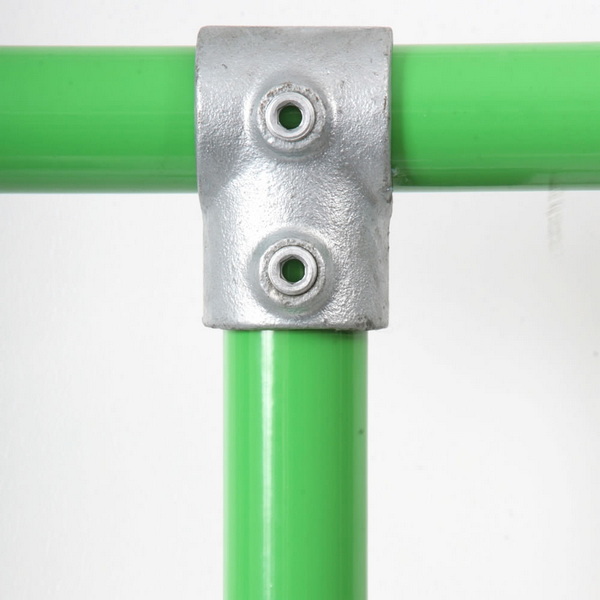
Safety Considerations for Outdoor Use
Proper Assembly and Inspection
- Ensure scaffolding is erected on a stable, level base using base plates or adjustable screw jacks.
- Use diagonal bracing to increase stability against wind loads.
- Tighten clamps to the manufacturer's recommended torque, typically around 45 foot-pounds.
- Install guardrails, toe boards, and safety nets where required.
Load Capacity and Overloading
- Adhere to the specified load limits of the aluminum tubes and clamps.
- Avoid overloading platforms with excessive workers, tools, or materials.
Weather Precautions
- Avoid using scaffolding in extreme weather conditions such as high winds or ice.
- Inspect scaffolding after storms or heavy rain for any loosening or damage.
Fall Protection
- Use personal protective equipment (PPE) such as harnesses and lifelines.
- Ensure all workers are trained in scaffold safety and fall prevention.
Maintenance Tips for Aluminum Tube and Clamp Scaffolding Outdoors
- Regular Cleaning: Remove dirt, mud, and debris that can cause slipping or corrosion.
- Inspection: Conduct frequent checks for dents, cracks, or clamp wear.
- Storage: When not in use, store tubes and clamps in a dry, covered area to prolong lifespan.
- Lubrication: Apply anti-seize compounds on clamps to prevent galling and ease assembly.
- Repair: Replace any damaged components immediately to maintain safety.
Comparison: Aluminum Tube and Clamp Scaffolding vs. Steel Scaffolding Outdoors
| Feature | Aluminum Tube and Clamp Scaffolding | Steel Scaffolding |
| Weight | Lightweight (~1.67 kg/m) | Heavier (~2.5 kg/m or more) |
| Corrosion Resistance | Excellent, naturally corrosion-resistant | Prone to rust without protective coating |
| Durability | Strong, suitable for heavy loads | Very strong, excellent load capacity |
| Ease of Assembly | Easier due to light weight | More labor-intensive due to weight |
| Weather Resistance | Withstands rain, UV, snow, and temperature changes | Requires maintenance to prevent rust |
| Cost | Generally higher initial cost | Lower initial cost but higher maintenance |
Conclusion
Aluminum tube and clamp scaffolding is not only suitable but often ideal for outdoor use due to its lightweight nature, corrosion resistance, and adaptability. It performs well in various weather conditions, including rain, snow, and UV exposure, while providing a strong and safe working platform. Proper assembly, regular maintenance, and adherence to safety standards are essential to maximize its benefits and ensure worker safety.
For projects requiring flexible, durable, and weather-resistant scaffolding solutions, aluminum tube and clamp scaffolding stands out as a reliable and efficient choice for outdoor applications.
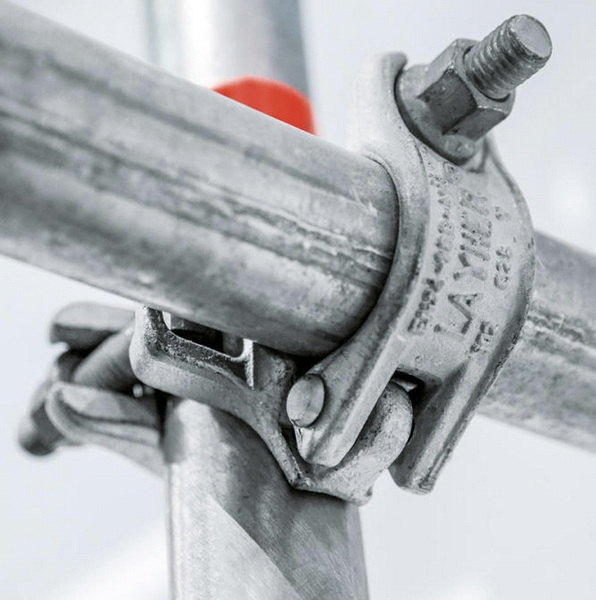
FAQ
1. Can aluminum tube and clamp scaffolding be used outdoors in rainy or snowy weather?
Yes, aluminum scaffolding is highly resistant to corrosion and weather conditions, making it suitable for use in rain, snow, and UV exposure[2][3].
2. How does aluminum tube and clamp scaffolding handle strong winds outdoors?
Properly braced and anchored aluminum scaffolding can withstand typical outdoor wind loads. However, in extreme weather, scaffolding should be secured or dismantled to prevent accidents[6].
3. Is aluminum tube and clamp scaffolding as strong as steel scaffolding for outdoor use?
While steel scaffolding is heavier and generally stronger, aluminum scaffolding offers sufficient strength for most outdoor applications combined with the advantage of being lightweight and corrosion-resistant[5].
4. What maintenance is required for aluminum scaffolding used outdoors?
Regular cleaning, inspection for damage, lubrication of clamps, and proper storage when not in use are essential to maintain safety and prolong the life of aluminum scaffolding[2][8].
5. Are there any safety standards specific to aluminum tube and clamp scaffolding outdoors?
Yes, aluminum scaffolding must comply with OSHA, BS 1139, EN 12811, or other relevant local standards, which specify load capacities, guardrail requirements, and inspection protocols[8][10].













